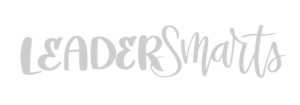How business savvy is your HR function, when it comes to infusing flexible workforces into your team’s work activities?
Learn more why leading companies such as Facebook, Coca-cola, Pfizer and Ebay have made external partnerships a key strategy in supporting business operations.

Written by
Karan Rhodes
More and more companies are realizing that the “war for talent” also extends to their flexible workforces as well. Flexible workforces are made up of external vendor, independent contractor, freelancer or consultant talent, who possess a variety of skills to tap into on-demand to scale up a full-time workforce.
While business functions such as IT, marketing, and finance have been early adopters in infusing flexible workforces into their work strategies, unfortunately Human Resources functions have lagged behind but are quickly realizing that they too must now jump aboard this trend in order to adequately support their organizations.
No matter your HR function, implementing a strategic approach to proactively curate your own small army of external expertise will ensure that you are not only ready to scale currently running projects, but that you will also be ready to mobilize when new projects with tight deadlines suddenly land on your to-do list.
You may be thinking, “Do I really need to focus on building a flexible workforce right now? I don’t have any current work for them to do, nor do I have a budget for their services.” In a word- YES!
According to the Future of Jobs report, by the World Economic Forum, changing work environments and the new way work gets done through sources like contractors, flex-workers, artificial intelligence, and machine learning was rated as the top global trend. Add to this the fact that a great number of Millennials and GenZs are opting to join flexible workforces vs becoming a company employee, it is now a strategic imperative for Talent leaders to focus on building their own flexible workforces in order to have a hope of staying competitive in the future.
In fact, many reports state that flexible workforces currently represent 35% of the U.S. workforce and that HR consulting is a $300B industry. Yes, paying by the task or project is definitely on the rise worldwide. Moving forward, HR functions are likely to evolve towards having a smaller pool of core full-time employees, but be supplemented by external consultants and contractors for specific projects.

Due to us witnessing this trend over the past few years , we at Shockingly Different Leadership established an entire company division to support Talent leaders at companies desiring to tackle the unique requirements of flexible workforces for HR functions.
As such, we have discovered and want to share 3 key learnings that may help you think about a good approach to establishing flexible workforces:
1. Infrastructure and Collaboration are Key
Remember that flexible workforces are an extension of your team. Being part of your team, even as a flex-worker, includes your responsibility for giving clear work instruction, clarifying role responsibilities, maintaining two-way communication, and ensuring project milestones are met. Also, you should ensure that the chosen partners in your flexible workforce truly have the right infrastructure and tools to be an optimal vendor. This includes items such as secure technology tools, business insurance, technology-based accounting systems, and a pool of back-up experts to provide emergency coverage if needed.
(Quick Tip: Technologies such as Quip, Dropbox, and Slack are great document collaboration tools. Technologies such as Skype and Zoom are tremendous video collaborations tools.)
2. Embrace the Mess
Many HR & Talent leaders know that they need the assistance of an external workforce, but delay engaging them due to wanting to better iron out things internally first. In actuality, all major people projects are complex and messy, and it is frequently more helpful to engage your experts earlier rather than later. Any expert worth their weight in gold knows how to function during times of ambiguity and is eager to help partner with your team to figure out the best way to get the work done.
3. Keep the “human” in Human Resources
Working together on a project where your professional reputation is on the line requires a high level of trust. Trust is key to the success of any high performing team and in order to build trust, you must treat your external partners like humans vs just the “hired help”. Managing by expectations versus job title will help to build trust and will allow all team members to show up as their best selves. We all know that the ability to understand human behavior and creatively solve for human needs is complex, so ensuring that both the internal and external members of your team remain agile and feel empowered to deliver a constant flow of effective communications to each other is critical.

Thinking through how to align external resources with your current team doesn’t have to be overwhelming. If you are interested in brainstorming how flexible workforces may best augment your team, I would love to personally offer you a complimentary consultation or a lunch and learn with your team, to discuss some additional best practices that I’ve witnessed.
You can set up an initial chat for us via my online scheduler below. Looking forward to it!



